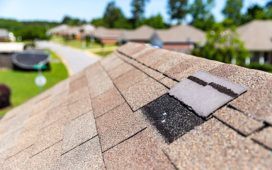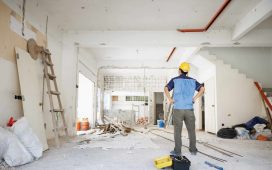An Introduction to Hazards in Historic Properties
Historic buildings captivate us with their charm and character. Yet, beneath their timeless facades, many conceal hidden dangers: hazardous materials. These substances, once common in construction, now pose significant health risks and present complex challenges for owners, renovators, and occupants alike.
Ignoring these materials can lead to serious health issues, costly project delays, and significant legal liabilities. Safe renovation and management of older buildings depend on understanding these hidden hazards.
This comprehensive guide will equip you with the knowledge to identify, understand, and safely manage these risks. We will explore the most common hazardous materials, where they typically hide, and the health concerns they present. We will also outline the critical steps for proactive management.
By understanding the history and presence of these materials, we can ensure safer, healthier environments for everyone.
Identifying Common Hazardous Materials in Old Buildings
The materials used in construction have evolved significantly over time. Many substances once considered cutting-edge or highly effective are now known to be detrimental to human health and the environment. Understanding which materials are common in older structures and their typical locations is the first step in effective hazardous material management.
Asbestos: The Hidden Fibrous Threat
Asbestos is a group of naturally occurring fibrous minerals that were extensively used in construction due to their exceptional heat resistance, strength, and insulating properties. Its widespread application, particularly before the 1980s, means it lurks in countless older buildings. While asbestos itself isn’t inherently dangerous when undisturbed, its fibers become airborne when the material is damaged or disturbed, posing severe health risks upon inhalation.
Asbestos can be categorized into two main forms based on its potential to release fibers:
- Friable Asbestos: This refers to materials that can be easily crumbled by hand pressure, releasing fibers into the air. Examples include spray-on insulation, pipe insulation, and some types of acoustical plaster. These materials present a higher immediate risk when disturbed.
- Non-friable Asbestos: These are materials where asbestos fibers are bound within a solid matrix, such as cement or vinyl. Examples include floor tiles, roofing shingles, and cement siding. While less likely to release fibers when intact, they can become friable if cut, sanded, or severely damaged.
The health risks associated with asbestos exposure are grave and often manifest decades after initial exposure. Inhaling asbestos fibers can lead to:
- Mesothelioma: A rare and aggressive cancer that affects the lining of the lungs, abdomen, or heart.
- Asbestosis: A chronic lung disease characterized by scarring of lung tissue, leading to shortness of breath and reduced lung function.
- Lung Cancer: Asbestos exposure significantly increases the risk of developing lung cancer, especially for smokers.
Common Asbestos-Containing Materials (ACMs) and Their Locations:
- Insulation: Found in boilers, pipes (pipe covers, pipe wrap), attics (vermiculite insulation), and around ducts.
- Flooring: Vinyl floor tiles, vinyl sheet flooring, and the adhesives (mastic) used to install them.
- Roofing: Shingles, felt, and mastic.
- Walls and Ceilings: Plaster, drywall board and taping compounds, textured paints (e.g., popcorn ceilings), ceiling tiles, and fireproofing materials sprayed onto structural beams.
- Exterior Siding: Cement siding materials (e.g., Transite panels).
- Other: Glazing compound, caulking compounds, fireproofing insulation, and some adhesives.
It is crucial to remember that asbestos fibers can remain airborne for hours, and the human body cannot break them down. Therefore, any suspected asbestos-containing material should be handled with extreme caution and only by qualified professionals.
Lead: A Persistent Toxin Beyond Paint
Lead, a heavy metal, was once a ubiquitous component in many building materials due to its durability, flexibility, and protective qualities. Its use peaked before the late 1970s, making it a common concern in buildings constructed prior to this period. The most well-known application is lead-based paint, but lead can also be found in plumbing and other less obvious places.
The primary health risk from lead comes from ingestion or inhalation, particularly of lead dust or paint chips. Children are especially vulnerable due to their developing nervous systems and tendency to put objects in their mouths. Even low levels of lead exposure can lead to serious health problems, including:
- Cognitive Impairment: Reduced IQ, learning disabilities, and behavioral problems.
- Developmental Delays: Particularly in young children.
- Nervous System Damage: Affecting coordination, hearing, and nerve function.
- Kidney Damage: Long-term exposure can impair kidney function.
- Reproductive Issues: In both men and women.
- Anemia: Lead interferes with red blood cell production.
Where Lead is Typically Found in Older Buildings:
- Paint: Lead was added to paint to improve its durability, drying speed, and moisture resistance. It’s commonly found on interior and exterior surfaces, especially windows, doors, trim, and siding. Peeling, chipping, or chalking lead paint is particularly hazardous as it can easily create lead dust.
- Plumbing: Lead pipes, lead solder used to join copper pipes, and brass fixtures can leach lead into drinking water. This is more common in public buildings older than 40 years.
- Roofing: Lead was historically used in roofing flashings and fasteners.
- Other: Glazing compound in windows, some ceramic tiles, and older batteries.
High-Risk Activities for Lead Exposure:
Disturbing lead-containing materials is the primary way exposure occurs. Activities such as:
- Sanding or scraping lead paint: Creates fine lead dust that can be inhaled or ingested.
- Demolition: Can release large quantities of lead dust and debris.
- Renovation: Cutting, drilling, or disturbing painted surfaces.
- Plumbing repairs: Disrupting lead pipes or solder can release lead particles into water.
If lead-based paint is intact and not disturbed, it generally poses less risk. However, during any renovation or demolition, proper precautions are essential to prevent the release of lead dust.
PCBs, Mercury, and Other Legacy Contaminants
Beyond asbestos and lead, several other hazardous materials were commonly incorporated into older building designs and systems, each posing unique risks.
- Polychlorinated Biphenyls (PCBs): These synthetic organic chemicals were widely used from the 1950s to 1979 in various construction materials and electrical equipment due to their non-flammability, chemical stability, and insulating properties. Manufacturers intended for them to provide greater durability, flexibility, and fire resistance.
- Where Found: Fluorescent light ballasts, electrical transformers, capacitors, caulking compounds, sealants, paint, and some plastic parts.
- Health Risks: PCBs are known carcinogens and can cause significant damage to the immune, reproductive, nervous, and endocrine systems. Exposure typically occurs through inhalation of vapors or dust, or skin contact.
- Mercury: This heavy metal can be found in various devices and components within older buildings.
- Where Found: Thermostats, thermometers, old fluorescent light fixtures, regulators, and some old boiler heating systems. It was also used in some rubber and polyurethane flooring (e.g., old gym floors).
- Health Risks: Mercury exposure, even in small amounts, can cause severe kidney damage, nervous system disorders (memory loss, tremors), and emotional/mental disorders. It is particularly dangerous when released as vapor.
- Mold: While not a “building material” in the traditional sense, mold is a pervasive biological hazard in older buildings, often indicative of moisture problems.
- Where Found: Any damp indoor environment, including walls, ceilings, carpets, and insulation, especially after water leaks, floods, or in areas with high humidity and poor ventilation.
- Health Risks: Mold exposure can trigger allergic reactions, asthma attacks, respiratory infections, and other respiratory issues. Certain types of mold, like black mold, can produce mycotoxins that are particularly harmful.
- Chlorofluorocarbons (CFCs): These ozone-depleting substances were once common refrigerants and blowing agents.
- Where Found: Old refrigeration units, air conditioners, and insulation foam (e.g., in rigid foam boards or spray foam).
- Health Risks: While direct human health risks from CFCs in buildings are generally low unless inhaled in large quantities, their environmental impact (ozone layer depletion) is significant. Proper recovery and disposal by certified technicians are crucial.
- Radioactive Materials: Some older building materials and devices can contain trace amounts of radioactive elements.
- Where Found: Ionization-type smoke detectors (contain Americium-241), fluorescent lamps (contain small amounts of radioactive isotopes), certain floor tiles, and some forms of granite building materials (can naturally emit radon gas). Antique clocks and exit signs may contain radium or tritium.
- Health Risks: Radon gas is a known cause of lung cancer. Exposure to other radioactive materials depends on the specific isotope and level, but generally carries risks of increased cancer rates and radiation poisoning with significant exposure.
- Crystalline Silica: While silica is a natural component of many common building materials, disturbing these materials can create respirable crystalline silica dust, which is hazardous.
- Where Found: Concrete, masonry, ceramic tiles, stucco, drywall, and sand.
- Health Risks: Inhalation of fine crystalline silica dust can lead to silicosis (an irreversible lung disease), lung cancer, and other respiratory ailments. This is particularly a risk during cutting, grinding, or drilling activities.
The presence of these materials underscores the importance of a thorough assessment before any renovation or demolition work begins.
A Proactive Framework for Managing Building Hazards
Effectively managing hazardous materials in older buildings requires a systematic and proactive approach. It’s not just about compliance; it’s about safeguarding health, protecting investments, and preserving the integrity of historic structures.
The Critical Role of a Hazardous Materials Survey
Before starting on any renovation, demolition, or even significant maintenance project in an older building, conducting a comprehensive hazardous building materials survey is not just a best practice—it’s often a regulatory requirement. This survey serves as the cornerstone of safe project planning and execution.
Why a Survey is Indispensable:
- Health Protection: The most critical reason. Identifying hazardous materials before they are disturbed prevents exposure to occupants, workers, and the surrounding community.
- Cost Control: Finding hazardous materials mid-project can lead to costly delays, change orders, and emergency remediation. A survey allows for accurate budgeting and scheduling.
- Legal Compliance: Numerous federal, state, and local regulations mandate surveys before demolition or renovation activities. Non-compliance can result in hefty fines and legal liabilities.
- Risk Management: A survey provides a clear picture of potential risks, enabling informed decisions about management strategies.
- Environmental Due Diligence: For property transactions, a hazardous materials survey is a key component of environmental due diligence, assessing potential liabilities.
Key Components of a Hazardous Building Materials Survey:
A thorough survey goes beyond a simple walk-through. It is a detailed, systematic investigation typically conducted by qualified professionals.
- Historical Review: Examining building plans, construction records, and previous renovation documents to identify materials used and potential hazardous substance applications.
- Visual Inspection: A trained professional will visually assess the building, identifying suspect materials based on their appearance, age, and typical usage patterns.
- Sampling: This is the most critical step. Small, representative samples of suspect materials (e.g., paint chips, insulation, flooring, caulk) are carefully collected. This is done in a way that minimizes disturbance and potential release of fibers or dust.
- Laboratory Analysis: The collected samples are sent to an accredited laboratory for analysis. For instance, polarized light microscopy (PLM) is commonly used for asbestos analysis, while atomic absorption spectroscopy (AAS) or X-ray fluorescence (XRF) are used for lead.
- Reporting: A comprehensive report is generated, detailing the types, locations, quantities, and condition of identified hazardous materials. It also provides recommendations for management or abatement.
It’s important to emphasize that visual observation alone is rarely sufficient to confirm the presence of hazardous materials. For example, sprayed acoustic insulation can look very similar to asbestos-containing sprayed fireproofing, and ceiling tiles with and without asbestos can appear identical. Only laboratory analysis can definitively confirm their presence.
Engaging licensed environmental consultants, like those specializing in Assessing hazardous materials in old buildings, is paramount. These professionals possess the expertise, certifications, and equipment necessary to conduct surveys safely and accurately, ensuring that all findings are reliable and actionable.
Management Strategies for Hazardous Materials in Old Buildings
Once hazardous materials have been identified through a comprehensive survey, building owners have several strategic options for managing them. The choice of strategy depends on various factors, including the material type, its condition, the planned renovation activities, risk levels, and budget.
| Strategy | Description
















